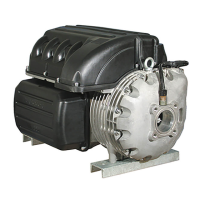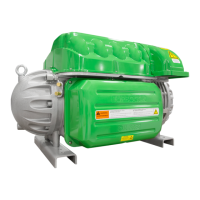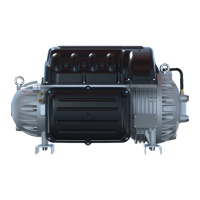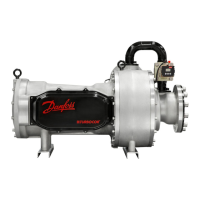109 of 132
M-SV-001-EN Rev.E
Troubleshooting
4.4 Compressor
Connection Status
Indications
4.5 System and
Compressor Level
Troubleshooting
4.5.1 Compressor Voltage
Troubleshooting
• Disconnected: no connection exists with a
compressor or remote compressor host
• Ready to Connect: a connection with a remote
host (if applicable) has been established, but no
compressor connection has yet been established
• Compressor is starting up: The currently
connected compressor is in startup mode
• Connected: There has been established a
connection with a remote host (if applicable)
and a connection with a compressor has been
established and verified
• No compressor found: Any serial ports or
connections have been established, but a valid
compressor was not able to be detected
• Error opening port: There was an error opening
the specified serial port (either the port is already
in use, the port name doesn’t exist, or there was
some other error attempting to open the serial
port)
• Server not found: Could not connect to remote
host
1. Carefully, remove the Mains Input Cover.
2. Verify all three phases of voltage before the
mains fuses. See Section 3.3.3.
• If the name plate rated voltage is present,
proceed to Step 3.
• If the voltage is (+/- 10%) outside of the
nameplate rated voltage, restore correct voltage.
3. Verify all three phases of voltage after the
mains fuses.
• If the name plate rated voltage is present
proceed to Step 4.
• If any of the three phases are not present, isolate
compressor power then replace the fuses.
4. Isolate the compressor power as described
in the “Electrical Isolation of the Compressor”
section of this manual.
5. Inspect all electronics for visible damage
• If no visible damage is present, proceed to Step
6.
• If there is any type of visible damage, replace
the damaged component(s).
6. Verify all of the Soft Start fuses. See Section
3.3.3.
• If all of the fuses are ok, proceed to Step 7.
• If any of the fuses are blown, replace the fuse(s)
and review the cause of the blown fuses. See
Section 4.5.3.
7. Verify the Inverter cable to the Inverter
connector is installed correctly.
8. Verify the DC/DC Converter resistances. See
Section 3.9.3.
• If DC/DC Converter resistances are correct,
proceed to Step 9.
• If DC/DC Converter resistances are not correct,
replace the DC/DC Converter then verify the
PWM and bearings.
9. Install the DC Bus test harness. See Section
1.9.2.
10. Disconnect the J2 (250VDC) and J3 (24VDC)
outputs from the DC-DC Converter.
11. Re-install the Top Cover then re-apply the
compressor power.
12. Verify the DC Bus voltage through the test
harness. See Section 3.6.3.
• If DC Bus voltage is correct, proceed to Step 13.
• If DC Bus voltage is not correct, verify the SCRs.
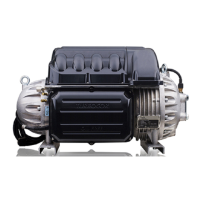
